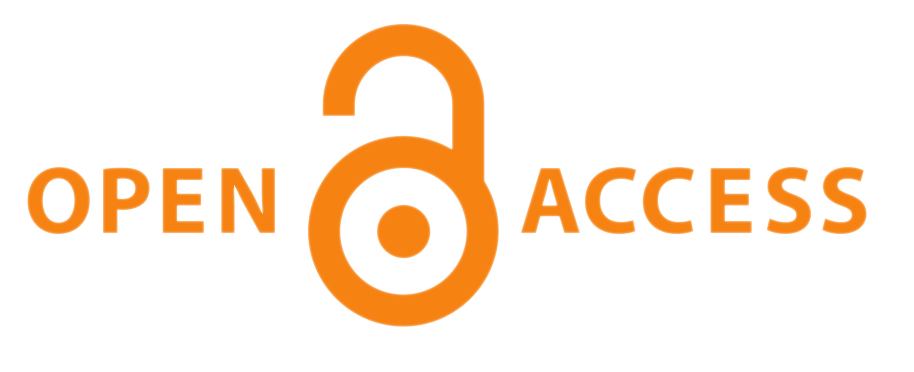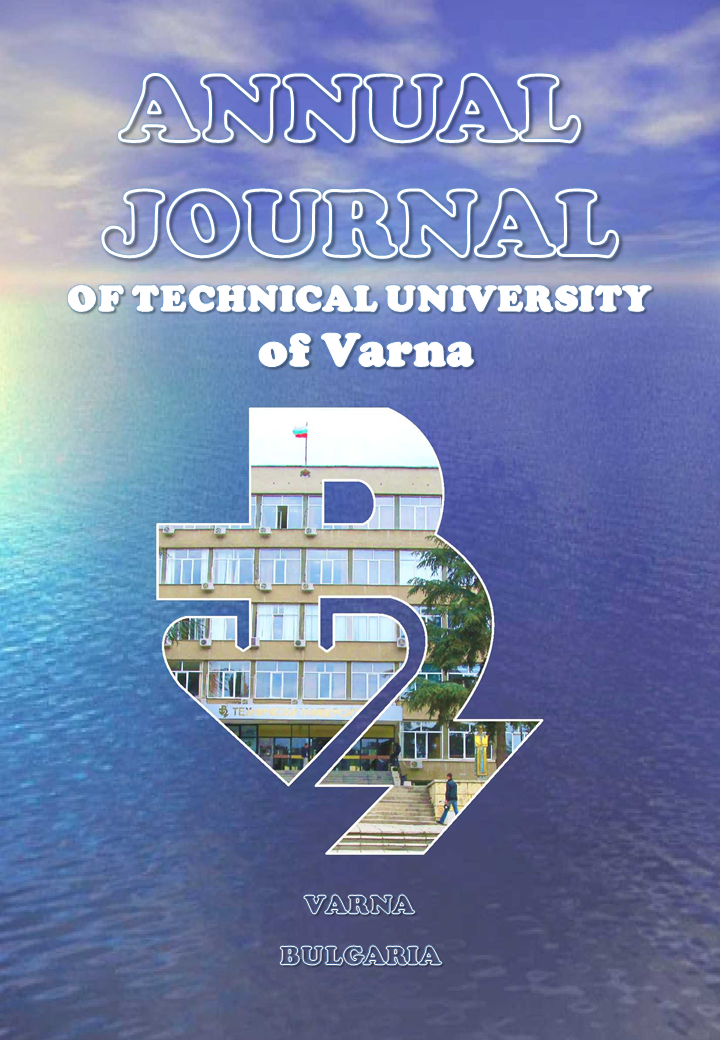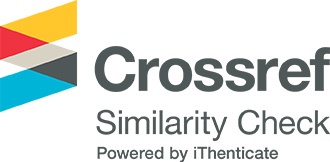Combination of factors influencing the antibacterial activity of oregan extracts as future additives for compost decontamination
##semicolon##
https://doi.org/10.29114/ajtuv.vol8.iss1.304##semicolon##
antimicrobial activity##common.commaListSeparator## mathematical modeling##common.commaListSeparator## oregano, extractАбстракт
Raw materials of plant origin can serve as an inexhaustible source of biologically active sub-stances, which in turn are used in various fields of medicine, especially in treatment of diseases that require an integrated approach. One of the contemporary trends is the search for herbal medicines that have a certain antimicrobial activity. The objects of our study were extracts and oils obtained from different plant fractions of oregano (roots, leaves, stems, whole plant) and using different solvents (water, ethanol, vinegar, wine, olive oil), grown in a vegetation cage and under greenhouse conditions. It was also determined that the antibacterial activity against Escherichia coli to the same plant fractions. The studied oregano extracts can be used for compost decontamination and other substrates in which Escherichia coli is found. For defining dependencies and trends among the experimental data were used mathematical statistics tools.
Изтегляния
##submission.citations##
<li>Консулова-Бакалова, М. (2021). Автоматизация на инженерния труд. Автоматизирано проектиране и анализ, Геа принт – Варна, ISBN 978-619-184-047-2.</li>
<li>Недев А., & Тенекеджиев, K. (1994). "Техническа диагностика и разпознаване на образи", Варна.</li>
<li>Недев, А., Димитракиев, Д. & Антонов, Г. (2011). “Mетодологически основи на задачата за разпознаване на състоянията по косвени признаци”, Годишник на секция “Информатика”, Съюз на учените в България Том 4, 95-102.</li>
<li>Нусторова, М. & Малчева, Б. (2020). Ръководство за лабораторни упражнения по микробиология. ИК „Геа-Принт“, 118 с. ISBN 978-619-184-039-7.</li>
<li>Asensio, C.M., Paredes, A.J., Martin, M.P., Allemandi, D.A., Nepote, V. & Grosso, N.R. (2017). Antioxidant Stability Study of Oregano Essential Oil Microcapsules Prepared by Spray-Drying. J. Food Sci., 82, 2864–2872. <a href="https://doi.org/10.1111/1750-3841.13951" target="_blank">Crossref</a></li>
<li>Burlakova E.B., Vorobyeva A.K. & Misharina T.A. (2012). The effect of oregano essential oil on the aging of mice aging. Izvestiya Vuzov. Series “Applied chemistry and biotechnology”. No. 2 (3). P. 92–95.</li>
<li>Cowan M.M. (1999). Plant products as antimicrobial agents // Clinical Microbiology Reviews. Vol. 12, no. 4. P. 564–582. <a href="https://doi.org/10.1128/CMR.12.4.564" target="_blank">Crossref</a></li>
<li>Ibrahim N. & Kebede A. (2020). In vitro antibacterial activities of methanol and aqueous leave extracts of selected medicinal plants against human pathogenic bacteria // Saudi Journal of Biological Sciences. Vol. 27, no. 9. P. 2261–2268. <a href="https://doi.org/10.1016/j.sjbs.2020.06.047" target="_blank">Crossref</a></li>
<li>Man, A., Santacroce, L., Jacob, R., Mare, A. & Man, L. (2019). Antimicrobial Activity of Six Essential Oils Against a Group of Human Pathogens: A Comparative Study. Pathogens, 8(1): 15. <a href="https://doi.org/10.3390/pathogens8010015" target="_blank">Crossref</a></li>
<li>Martucci, J.F., Gende, L.B., Neira, L.M. & Ruseckaite, R.A. (2015). Oregano and lavender essential oils as antioxidant and antimicrobial additives of biogenic gelatin films. Ind. Crops Prod., 71, 205–213. <a href="https://doi.org/10.1016/j.indcrop.2015.03.079" target="_blank">Crossref</a></li>
<li>Rodriguez-Garcia, I., Silva-Espinoza, B.A., Ortega-Ramirez, L.A., Leyva, J.M., Siddiqui, M.W., Cruz-Valenzuela, M.R., Gonzalez-Aguilar, G.A. & Ayala-Zavala, J.F. (2016). Oregano Essential Oil as an Antimicrobial and Antioxidant Additive in Food Products. Crit. Rev. Food Sci. Nutr., 56, 1717–1727. <a href="https://doi.org/10.1080/10408398.2013.800832" target="_blank">Crossref</a></li>
<li>Terenina M.B., Misharina T.A., Krikunova N.I., Alinkina E.S., Misharina T.A. & Fatkulina L.D. (2011). Essential oil of oregano as an inhibitor of oxidation of higher fatty acids. Applied Biochemistry and Microbiology. Vol. 47. No. 4. p. 490–494. <a href="https://doi.org/10.1134/S0003683811040181" target="_blank">Crossref</a></li>
<li>Zaidan M. R. S, Noor Rain A., Badrul A. R., Adlin A., Norazah A. & Zakiah I. (2005). In vitro screening of five local medicinal plants for antibacterial activity using disc diffusion method. Tropical Biomedicine. Vol. 22, no. 2. p. 165–170.</li>
<li>Female fetuses are more reactive when mother eats chocolate. The Journal of Maternal-Fetal & Neonatal Medicine, 27(1), 72-74. <a href="https://doi.org/10.3109/14767058.2013.804053" target="_blank">Crossref</a></li>
<li>Winter, J., Hunter, S., Sim, J., & Crome, P. (2011). Hands-on therapy interventions for upper limb motor dysfunction following stroke. Cochrane Database of Systematic Reviews, 2011(6). <a href="https://doi.org/10.1002/14651858.CD006609.pub2" target="_blank">Crossref</a></li>
</ul>
##submission.downloads##
Публикуван
##submission.howToCite##
Брой
Раздел (Секция)
##submission.license##
СПОРАЗУМЕНИЕ ЗА ПУБЛИКУВАНЕ
Годишника на Технически университет - Варна (ГТУВ) цели да гарантира, че постъпващите статии се публикуват, като същевременно се предоставя значителна свобода на публикуващите ги автори. За изпълнение на тази цел, ГТУВ поддържа гъвкава политика относно авторските права, което означава, че няма прехвърляне на авторски права от автора на издателя, а авторите запазват изключително авторско право върху интелектуалното си произведение.
При изпращане на статия, Отговорния автор трябва да се съгласи и приеме правилата и условията за публикуване, изложени в настоящото Споразумение за публикуване, които са както следва:
ПРЕДОСТАВЯНЕ НА ПРАВА ОТ ОТГОВОРНИЯ АВТОР
Отговорния автор предоставя на ГТУВ за времето на пълния срок на авторското право и всяко следващо удължаване или подновяване, следното:
• Неотменимо, неизключително право да публикува, възпроизвежда, предоставя, разпространява или по друг начин използва предоставената работа в електронни и печатни издания и в производни произведения в целия свят, на всички езици и във всички известни съществуващи или в последствие възникнали медии.
• Неотменимо, неизключително право да създава и съхранява електронни архивни копия на работата, включително правото да депозира предоставената работа в дигитални хранилища с отворен достъп.
• Неотменимо, неизключително право на лицензиране на други лица да възпроизвеждат, превеждат, преиздават, предоставят и разпространяват предоставената работа при условие, че авторите са надлежно идентифицирани (за момента това се извършва чрез публикуване на произведението под лиценз Creative Commons Attribution 4.0 Unported).
С предоставянето на работата за публикуване, авторските права върху материала остават на авторите. Авторите запазват всички патентни, търговски марки и/или други права върху интелектуалната си собственост.
ЗАДЪЛЖЕНИЯ НА ОТГОВОРНИЯ АВТОР И СЪАВТОРИТЕ
При последващо разпространение или повторно публикуване на предоставената работа, Отговорния автор се съгласява да идентифицира ГТУВ, в който е публикувано произведението като първоначален източник на първото публикуване на работата. Отговорния автор гарантира, че съавторите също ще посочват ГТУВ като източник на първото публикуване, когато разпространяват, преиздават или се позовават на настоящата работа в бъдещи свои публикации.
ГАРАНЦИИ ОТ СТРАНА НА ОТГОВОРНИЯ АВТОР
Отговорния автор гарантира че предоставената за публикуване работа не нарушава никои действащи нормативни разпоредби или законни права на която и да е трета страна. Същия гарантира че работата не съдържа какъвто и да е материал, който може да се възприеме от читателската аудитория като неетичен, компрометиращ, нехуманен, расистки, клеветнически и/или нарушаващ авторски и/или имуществени права, права на интелектуална собственост или поети ангажименти за поверителност към трети страни. Отговорния автор гарантира че предоставеният материал е с оригинално съдържание, не е официално публикуван в никое друго издателство, както и че не е в процес на публикуване пред други издателства. Отговорния автор също така гарантира че притежава съответните правомощия да сключи настоящото споразумение. Ако предоставяната работа е подготвена съвместно с други съавтори, Отговорния автор гарантира че всички останали съавтори са информирани и са съгласни предоставения материал да бъде публикуван в ГТУВ.
Отговорния автор лично (или от името на авторския колектив) дава съгласието си да не въвлича по никакъв начин ГТУВ като страна в каквито и да било научни, академични, административни и/или съдебни спорове, в случаите на установени нарушения на горепосочените декларации и гаранции.
ПРАВА И ЗАДЪЛЖЕНИЯ НА ГТУВ
ГТУВ се съгласява да публикува предоставения материал, в случаите когато същия отговаря напълно на всички необходими качествени, технически и редакционни изисквания, като го идентифицира еднозначно с авторите му. В следствие на настоящото споразумение, на ГТУВ се предоставя правомощие да упражнява права при необходимост от името на авторите върху трети лица, като например в случаите на установено плагиатство, нарушаване на авторски права и др.
Декларация за поверителност на лични данни
Вашите имена и имейл адреси, въведени в уебсайта на ГТУВ, ще бъдат използвани само и изключително за обявените цели на настоящото списание и няма да бъдат използвани за никакви други цели от издателя или предоставяни на друга - трета страна.
Издателят се задължава да извърши всички необходими действия, цялата предоставена лична информация да остане конфиденциална, в рамките на издателя и да не бъде споделена с външни обекти или субекти, освен ако не е дадено предварително изрично разрешение от собственика на личните данни.
Вашата лична информация няма да бъде обект на продажба, разпространение или публикуване по какъвто и да е начин и под каквато и да е форма.









